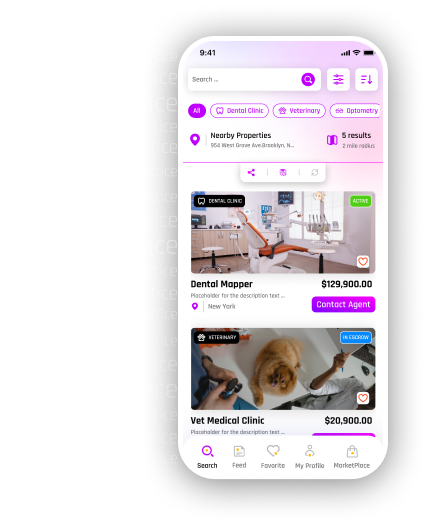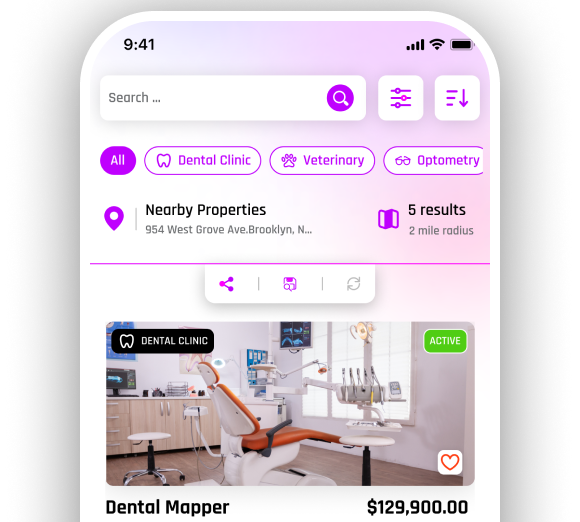The Importance of a Transition Plan Before Buying a Veterinary Practice

The veterinary sector of United States is constantly booming. The growth of the industry is driven by a growing pet-owning population and enhanced spending on animal healthcare. According to current reports, the pet industry within the United States surpassed $136 billion during 2022, with veterinary care representing a significant section of this growth. Veterinarians are facing higher demand for their services, from routine checkups to special treatments, making veterinary practices a fulfilling and lucrative investment.
However, buying a veterinary practice is a complex procedure. Beyond the economic commitment, it needs careful planning and strategy to assure a seamless transition. In this regard, a robust transition plan becomes important when you are interested in veterinary practice to buy. This blog will demonstrate the importance of a well-thought-out plan and its role to facilitate a smooth handover to secure a long-term success.
Why a transition plan is essential
-
Assure business continuity
While buying a veterinary practice, maintaining consistency of functions is important. Clients expect a similar level of service and care even after the ownership changes. A transition plan helps to integrate the new owner within the practice seamlessly, assuring minimal disruption to regular operations.
-
Preserves client relationships
Considering veterinary practices, client relationship is situated at the paramount. Pet owners usually have long-standing trust within their veterinarians. A transition plan includes proper strategies for introducing the original owner to clients as well as retaining their loyalty.
-
Supports staff retention
The staff also play an important role in the success of a medical or veterinary practice. A sudden alteration in ownership can provide uncertainty among employees. A transition plan outlines transparent communication and retention strategies to keep the team motivated and engaged.
-
Facilitates financial stability
Transition ownership includes financial complexities, including revenue continuity and handling existing liabilities or debts. A transition plan helps address these issues proactively assuring the financial health or the entire practice.
-
Aligning goals and vision
Each veterinary practice has its unique values, goals and culture. A transition plan assure that the new owner’s vision aligns with the established ethos of the practice, supporting a cohesive environment for the clients and staff.
Key components of a transition plan
-
Comprehensive due diligence
Before stepping into the process of selling or buying a veterinary practice, conduct a thorough review of the practice’s financial records, staff contracts, operational procedure and client base. This information forms the foundation of the transition plan.
-
Client communication strategy
Prepare for a planning to introduce yourself to current clients. This can include personalized letter, social media announcements, or meet-and-greet events to build rapport and trust.
-
Staff integration plan
As per the market trend, always work with the present owner to know the role of staffs and other dynamics. Include an outline for open communication with employees to address their concern as well as reinforce their importance to the success of the practice.
-
Operational handover
Check for existing documents, workflows, vendor relationships and software systems. An extended operational handover assures a smooth transition with limited disruption to services.
-
Financial transition plan
Coordinate with financial advisors and accountants to manage the transfer of liabilities, cash flow and assets. Assure that all financial obligations are manageable and clear.
-
Legal and compliance framework
Connect with the attorneys to address regulatory requirements, contracts and licensing. This stage assures that the transition complies with state as well as federal laws.
How the PracticeFinder App can help
The PracticeFinder App is a cutting-edge platform curated to simplify the process of selling and buying veterinary practices. You can support your transition planning from PracticeFinder app by:
-
Practice listings with detailed insights
PracticeFinder helps to get comprehensive database of veterinary practices for sale across the United States. Each listing consists detailed information including operational highlights to evaluate potential practices efficiently.
-
Expert guidance and resources
The app connects with buyers and sellers with industry experts, including financial advisors and transitional brokers. This information is precious for creating as well as executing a robust transition plan.
-
Customizable transition planning tools
PracticeFinder deliver tools to help buyers online and handle their transition plans. From due diligence client communication templates to diligence checklists, these factors assure nothing is overlooked.
-
Streamlined communication
This app provides secured communication between buyers and sellers, allowing for transparent discussion about timelines, expectations and functional details.
-
Access to financing options
PracticeFinder lists the lenders specialised with veterinary practice financing, that makes it simpler to secure funds for the purchase procedure. The platform also provides economic planning resources to assure stability during the transition.
FAQs
1. Why is a transition plan important when buying a veterinary practice? A transition strategy minimizes interruptions and promotes success by guaranteeing seamless operations, maintaining relationships with clients and employees, and coordinating the objectives of the new owner with the practice's core principles.
2. How can the PracticeFinder App assist with buying a veterinary practice?
PracticeFinder facilitates communication gives buyers access to comprehensive practice listings, links them with industry professionals, and offers tools for transition planning.
3. What are the key components of a veterinary practice transition plan? Due diligence, client communication tactics, employee integration plans, operational handovers, financial transition frameworks, and legal compliance are all crucial elements.
4. Can I manage a veterinary practice transition without professional help? Although it is feasible, using professionals such as brokers, financial advisors, and platforms such as PracticeFinder lowers risks and guarantees a smoother transition.

